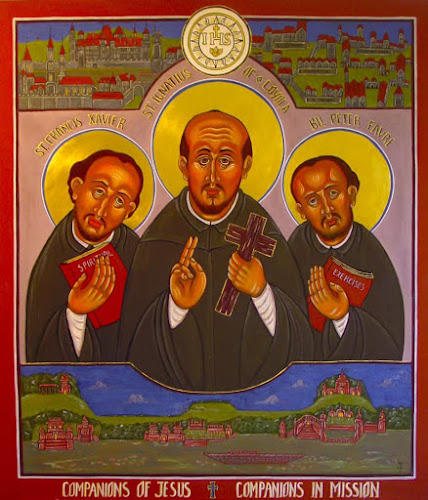Ignatius of Loyola (July 31st)
Edited by Bp. Joseph Boyd (Ancient Church of the West)
Ignatius of Loyola was born at Loyola in the mountains of northern Spain in 1491. A member of the minor nobility, Ignatius spent his youth and early adulthood as a courtier and soldier. He occasionally vowed to dedicate himself more fully to God, but never quite followed through. It was only after he read the lives of the saints while convalescing from a leg wound incurred during a battle that he finally began his spiritual pilgrimage with real intent at the age of 30.
Soon after this, Ignatius began to experience ecstatic visions, but within a year suffered a period of intense spiritual dryness (what John of the Cross termed the “dark night of the soul”), which nearly drove him to despair. He persevered, however, and out of this was born Spiritual Exercises, one the most important spiritual works of all time. Ignatius was a true mystic. He centered his spiritual life on the essential foundations of the Faith - the Trinity, Christ, the Eucharist. His spirituality is expressed in the Jesuit motto, Ad majorem Dei gloriam - “for the greater glory of God.”
During this period, the Reformation set the world on fire and religious schisms became an ever-present reality. Many Roman Catholic thinkers and mystics began the painful process of examining the faults within the Roman Church that caused such a dramatic break with the established modes of history and ravaged the culture of Christendom. The Council of Trent labored on over many years during Ignatius' life, and what was immediately apparent that the moral corruption of the Church was largely to blame for the social unrest, and this realization prompted a move to purify the Church and make the training of priests much less of a laze faire process, and a strict, if not puritanical, ascetical discipline. This was not the “Counter-Reformation”, but the “Catholic Reformation” in which many elements of the superstitious Christianity of the uneducated masses began to be challenged with the light of Aristotelian “Non-Contradiction” through the popularization of the writings of St. Thomas Aquinas.
In the midst of this great religious conflict in France during the early 1500’s, Ignatius of Layola and Francis Xavier began to internalize these lessons, and attempted to counter Protestantism at the same time through new methods of teaching and discipleship. They established a loose confraternity, and then, based upon the papal dispensation that they received, started a full-scale Counter Reformation operation, which was meant to bolster the flagging powers of the Pope through scholarship and politically strategic involvement. The Pope approved this new order in 1540, and the Jesuits immediately set about their grand vision of global missionary work.
The Examen
The most powerful aspect of Ignatius’ practice was the Examen, a meditation done at night before bed, to put life experiences into perspective and give guidance for spiritual life. Teaching this process to his followers allowed them to unite behind his vision of evangelism and missions, and welded Ignatius’ disciples together into a powerful, laser-like religious vision that could effectively be used to win the contest against the Anglicans and Continental Protestants to the North and the Orthodox and Oriental Churches to the East.
1. Become aware of God’s loving presence and thank Him for it.
2. Ask the Holy Spirit to show you where God is at work in your life.
3. Look back on your day: remember what you did and how you felt.
4. Are there lessons to learn or gifts to receive?
5. How might you serve Jesus in new ways tomorrow?
The Society of Jesus, or Jesuits as they would come to be called, were a unique socio-political organization of highly elite and disciplined intellectual churchmen who would be the Counter-Reformation Pretorian Guard of the papal claims. It became clear that the Roman Catholic had halved its number of faithful, and so, to increase its chances of survival and influence, it would have to look outside of Europe to establish a New Christendom. While always remaining faithful Roman Catholic, and coming into great conflict with Anglicans and Orthodox through a contradiction of spiritual visions, St. Ignatius endeavored to reform Catholicism from within, and led one of the greatest missionary movements in history, converting many non-Western lands to Christianity.
 |
| A Filipino Folk Icon of St. Ignatius of Loyola |
Collect:
O God, who for the greater glory of thy Name, didst endue thy Church militant with an increase of strength through the life and labours of blessed Ignatius: grant us, by his example, so to wage our earthly warfare, that we may be found worthy of a heavenly crown; through Jesus Christ thy Son our Lord, who liveth and reigneth with thee, in the unity of the Holy Spirit, ever one God, world without end. Amen.






Comments
Post a Comment